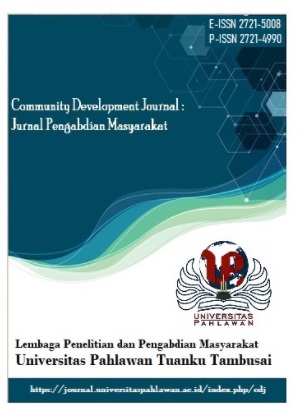IDENTIFYING ELEMENTARY STUDENTS’ MOTIVATION OF ART EDUCATION LEARNING PROCESS
DOI:
https://doi.org/10.31004/jrpp.v6i2.17728Keywords:
Students’ Motivation, Art Education, Elementary StudentsAbstract
The pursuit of education as a fundamental goal transcends a variety of backgrounds and is an idea that is generally accepted and encountered in daily life. Importantly, the necessary level of education in society requires a growth in student comprehension, which is accomplished by improving educational facilities throughout the learning process. Through supervision, instruction, and training in their chosen fields, this extensive educational journey plays a crucial role in preparing students for future endeavors. The study explores the complex interaction of internal and environmental factors influencing student motivation through a descriptive survey technique using questionnaires. Talent, focus, interest, and health are internal elements that interact with teaching methods, educational resources, and environmental impacts on the outside. Data analysis demonstrates the importance of these components, with environmental influences, learning aids, and instructional methods working together to motivate students. The study sheds light on the varied landscape of student motivation, particularly in the context of art education, at the end. This study not only stresses the differences in student motivation levels but also shows the opportunity for educators to increase motivation through creative educational strategies and interesting materials. The results show that, despite the fact that motivation might vary, its crucial function in generating academic zeal and brilliance is undeniable.References
Ambarwangi, S., Ambarwangi, S., & Suharto, S. (2013). Pendidikan Multikultural Di Sekolah Melalui Pendidikan Seni Tradisi. Harmonia: Journal of Arts Research and Education, 13(1). https://doi.org/10.15294/harmonia.v13i1.2535
Fenny Muldiani, R., Samsiyah Purwaningsih, S., Hadiningrum, K., & Yuningsih, N. (2018). Membangun Pola Berpikir Ilmiah Anak Usia Dini Melalui Pembelajaran Ipa Dan Matematika Pos Paud Melati Kel Pasirkaliki Kec Cimahi Utara (Vol. 1, Issue 2).
Kristanto, A., kunci, K., Seni, P., Seni, K., Kristanto merupakan dosen musik, A., & Abdiel, S. (2017). Memahami Paradigma Pendidikan Seni. Jurnal Abdiel: Khazanah Pemikiran Teologi, Pendidikan Agama Kristen Dan Musik Gereja, 1(01), 119–126. https://doi.org/10.37368/JA.V1I01.90
M, S. A., S, L., E, R., & C, L. J. (2015). Teaching health science students foundation motivational interviewing skills: use of motivational interviewing treatment integrity and self-reflection to approach transformative learning. BMC Medical Education, 15(1), 228. https://doi.org/10.1186/S12909-015-0512-1/TABLES/2
O’Sullivan, P. S. (2015). What’s in a learning environment? Recognizing teachers’ roles in shaping a learning environment to support competency. Perspectives on Medical Education, 4(6), 277–279. https://doi.org/10.1007/S40037-015-0234-4/METRICS
Owens, D. C., Sadler, T. D., Barlow, A. T., & Smith-Walters, C. (2020). Student Motivation from and Resistance to Active Learning Rooted in Essential Science Practices. Research in Science Education, 50(1), 253–277. https://doi.org/10.1007/S11165-017-9688-1/Metrics
Sendratasik, J. P., Bahasa, F., Seni, D., & Semarang, U. N. (2018). Pengembangan Kreativitas-Inovatif Dalam Pendidikan Seni Melalui Pembelajaran Mukidi. Refleksi Edukatika?: Jurnal Ilmiah Kependidikan, 8(2). https://doi.org/10.24176/RE.V8I2.2348
Thi, T. T., & Nguyen, H. T. T. (2021). The effects of classroom management styles on students’ motivation and academic achievement in learning English. International Journal of Learning, Teaching and Educational Research, 20(1). https://doi.org/10.26803/ijlter.20.1.12
Downloads
Published
How to Cite
Issue
Section
License
Copyright (c) 2023 Anton Sitepu

This work is licensed under a Creative Commons Attribution-ShareAlike 4.0 International License.






